Why practice makes perfect

Why practice makes perfect
Many of you are watching your little one at swim class, week after week, and thinking it looks like they are doing the same thing without really learning anything. You may be getting a tad frustrated and rethinking this whole swimming lessons thing, since it appears they’re not making progress. Let’s set the record straight: They are learning the building blocks of swimming and increasing their strength, skill and stamina, little by little.
If you have children, you know they tend to do the same things over and over again — especially when learning. First, it’s drawing a straight line repeatedly; then a curved line; and then — magically — they’re writing. But actually, there’s nothing magical about it. They worked hard at mastering the little skills that all need to melt into place to write letters; things like holding a pencil and focusing on the task at hand. The exact same concept is seen when a child is learning how to swim (or any other skill)!
You wouldn’t expect your children to be writing full sentences on the second or third week of school, right? It takes a lot of work to master a new skill, whether it is writing, swimming or tying a shoelace.
Practice, practice, practice
When your little fish first starts swimming lessons, you may get excited over how quickly they acquire new skills — such as putting their head in the water or kicking their feet. But then it seems like they’ve hit a plateau and they’re not making as much progress, when in fact they really are.
Take it from Andrew Brown, General Manager of Hilton Brown Swimming. Practicing the same skill over and over is key. “Doing the same movements each week, even though they may not display immediate progress, is like tying shoe laces – one day it will click and they’ll be off!”
Why repetition is key
It’s common for babies and infants to grow in leaps and bounds in their swim skills, but then appear to plateau when they are learning certain skills as preschool and school age swimmers. However, that’s not really the case — they’re just being introduced to new skills that are much more complex and they’re working harder to attain them.
For instance, your little swimmer may now be working on breath control. While it may look like she’s doing the exact same thing every week, she’s really making slight improvements and strengthening her core swimming fundamentals — which will help her greatly in the long run. You only see her gliding in the water, but last week she was gliding a length of 2 metres, while this week she’s gliding 3 metres…and next week she’ll be working on gliding further. Celebrate those extraordinary results!
But there’s something even more important at play when it comes to repetition in swimming lessons, something that you may not be able to see: Confidence. Your child is gaining confidence — in her abilities, in her teacher and in knowing what’s coming next. That’s some of Hilton Brown Swimming’s key goals at play: keeping your little ones confident and continuing to grow!
Swimming all year round is important
Children shouldn’t take a break from swim lessons in winter (or summer). Why? Because you want them to keep hold of that confidence and continually build upon those skills they’re learning every week. The repetitiveness helps it become second nature — plus it’s important for muscle memory and all the physical aspects involved developmentally.
In addition, the Hilton Brown Swimming instructors use best practice as well as a good dose of empathy to make sure your children are doing the right swim strokes every single time. They are there in the pool with your children, refining those skills and giving those swimmers the most during that half-hour of physical activity.
Sign up for lessons at Hilton Brown Swimming
Hilton Brown Swimming has plenty of locations, so find one near you and sign up your little one (age 3 months old and older!) for the lifelong experience of learning how to swim. Investing in a weekly 30-minute class is well worth it, all year long!


